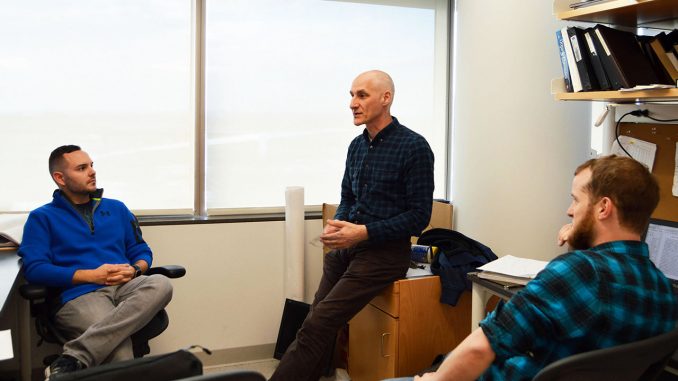
The United States Department of Defense awarded Temple’s chemistry department a multi-year, multi-million dollar grant to detect and destroy chemical warfare agents.
The grant is a three-year agreement which will award $500,000 each year, with the possibility for two additional years if progress is shown.
Research first began a year and half ago, organic chemistry professor Christian Schafmeister said. The goal is to develop catalysts, which are molecules that speed up reactions to counteract chemical agents that attack nerves. These agents can be used in warfare.
Nerve cells send signals from the body to the brain. When chemical agents are released, they block enzymes in the brain, resulting in nerves sending too many signals to the body. This can cause nausea, headaches, chest pains or intense muscle spasms. Schafmeister said there are currently no ways to stop this bodily reaction.
Schafmeister and his team are working on creating molecules that are big enough to take in and break down the smaller, toxic molecules in nerve agents.
Pairs of chemical bonds “snap together” in order to make these larger molecules, creating an active site where the nerve agent molecules are taken in and broken down into harmless byproducts, Schafmeister said.He hopes this will mitigate symptoms caused by chemical agents.
“The things that we’re trying to make are rugged and robust and small,” he added. “They’re bigger than the molecules that they’re attacking, but they are smaller than anything nature makes to attack [nerve agents].”
Schafmeister said the technology could be used to protect soldiers and treat exposure to the chemical agents, but would have to be administered very quickly.
“There is potential that you could inject these into people [preventatively] to protect them if they go into an exposed area,” Schafmeister said.
First, Schafmeister hopes to develop computer software that will design the molecules. Then, he and his team would be able to build them.
“I really enjoy working with the chemistry we do here,” said JD Northrup, a chemistry postdoctoral fellow working with Schafmeister on the research. “It’s interesting because not a lot of people have done this sort of work.”
Others working with Schafmeister on the grant include chemistry professor Michael Zdilla, University of California at Los Angeles chemist Kendall Houk and Shane Kasten, a scientist with the U.S. Army Medical Research Institute of Chemical Defense.
The Department of Defense’s grant is not the first one that Schafmeister has received for his research. He was awarded a $1 million grant last week from the Department of Energy to develop a similar catalyst to make biodegradable plastics, he said.
“The Department of Defense has been funding [research] for a long time to develop catalysts for nerve agents, but it is a platform technology for solving almost every problem,” Schafmeister said.



Be the first to comment